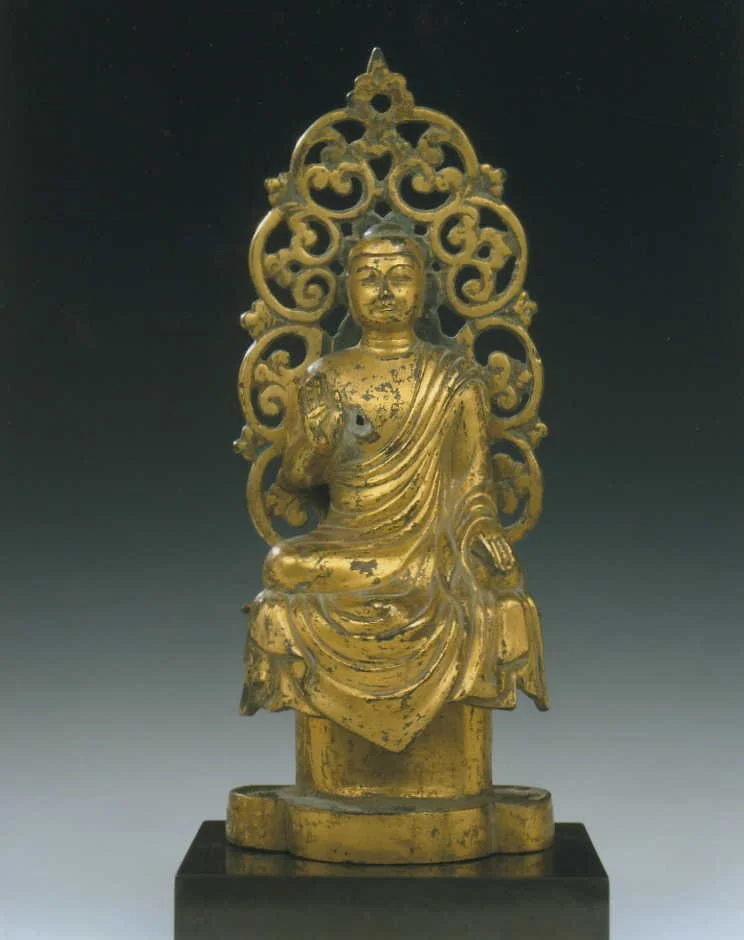Gilt Bronze Buddha
Tang Dynasty, second half of the 7th century
Height (including mandorla and throne): 20.6 cm
Gilt bronze figure of Buddha seated in padmāsana with his right hand raised in abhaya mudrā and his left hand resting on his knee. He wears a robe leaving the right shoulder bare, which falls in elaborately arranged drapery folds across the body cascading down the dais and forming a triangular shape with three U-shaped drapery folds in front. The Buddha has a low usnisa and delicately modeled facial features with a gentle, serene expression.
The sculpture is hollow-cast and fitted with a detachable plate-like mandorla intricately decorated with openwork design of floral scrolls. The trefoil-shaped base is pierced in three places and detachable. The Buddha, base and mandorla are richly gilt.
No closely comparable example appears to be recorded. However, in comparison to extant 8th-century gilt bronze Buddha images, the low usnisa, restrained body volume and simple arrangement of drapery folds cascading down the dais, suggest a date in the early Tang dynasty during the second half of the 7th century.
Tang dynasty gilt bronze figures of Buddha of this size and complete with their original mandorla and base are extremely rare.
Provenance:
Eskenazi, London 1987
Private Collection, London
Published:
Eskenazi, Tang, London, 1987, pp. 38-39, no. 18.
Youngsook Pak and Roderick Whitfield, Handbook of Korean Art: Buddhist Sculpture, London, 2003, p. 215, fig. 037-5.
Similar Examples:
For a stylistically related example, see:
Kuboso Memorial Museum of Art, Osaka, Zui Tō Jidai no Kondōbutsu, Osaka, 1993. pl. 104.

